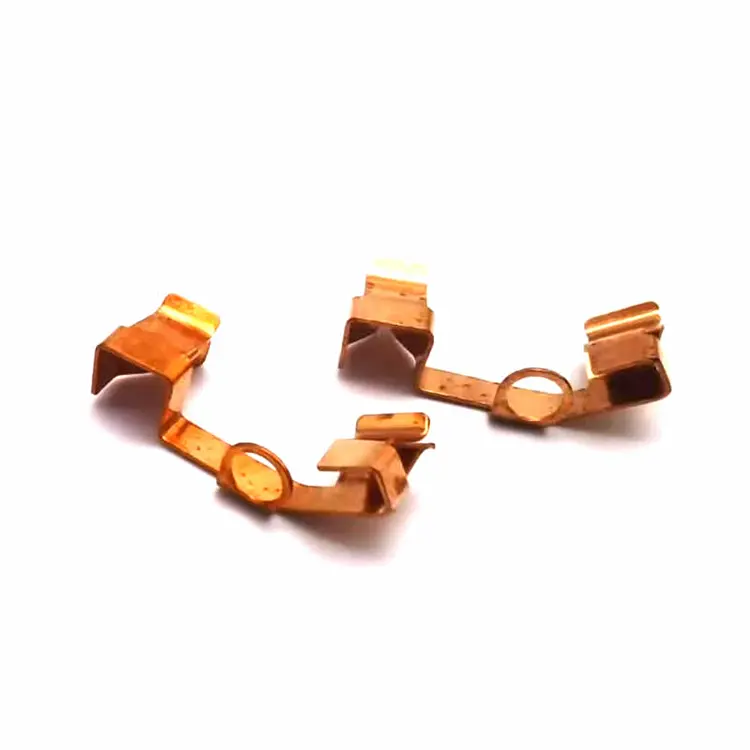What is stamping parts?
2025-07-10
In the modern industrial system, stamping parts are a type of metal or non-metal parts made by stamping process. With the characteristics of high efficiency, precision and low cost, they have become an indispensable basic component in the fields of automobile manufacturing, electronic appliances, medical equipment, etc. From mobile phone shells to car chassis, stamping parts are everywhere in life and production.

The core definition and processing principle of stamping parts
Stamping parts are made of metal sheets (such as steel plates, aluminum plates), strips or pipes. Under the action of the press, the material is subjected to external force through the die to cause plastic deformation or separation, thereby obtaining parts with specific shapes, sizes and performance. Compared with casting, forging and other processes, stamping processing does not require melting of materials, and is completed directly through cold shaping, which can retain the original mechanical properties of the material to the greatest extent, and the part accuracy can reach IT10-IT14 level, and the surface roughness is as low as Ra1.6-6.3μm, which meets the needs of precision assembly.
The stamping process is mainly divided into separation processes (such as punching and blanking) and forming processes (such as bending and stretching). Complex stamping parts need to be completed through a combination of multiple processes. For example, the reinforcement ribs of car doors are formed into a three-dimensional structure by stretching, and then the installation holes are reserved by punching process and finally become stamping parts that meet the assembly standards.
Material properties determine the application scenarios of stamping parts
The material selection of stamping parts is closely related to their application scenarios. Low carbon steel is often used to manufacture large stamping parts such as automobile body covers and chassis brackets due to its good plasticity and moderate strength; stainless steel has become the first choice for kitchen utensils and medical equipment stamping parts due to its corrosion resistance (such as stainless steel dinner plates and surgical instrument housings); aluminum alloys are widely used in stamping parts in the fields of new energy vehicles and aerospace (such as battery housings and cabin parts) due to their lightweight advantages.
Non-metallic materials can also be made into parts through stamping processes, such as insulating rubber gaskets, plastic decorative parts, etc. These stamping parts are mostly stamped at low speed using hydraulic presses to avoid material fragmentation. Stamping parts of different materials need to match special molds and process parameters. For example, stainless steel stamping requires an additional lubrication process to prevent mold wear and scratches on the surface of parts.
Industrial advantages and technological development of stamping parts
The industrial advantages of stamping parts are significant: first, high production efficiency. High-speed punching machines can complete hundreds of stampings per minute, which is suitable for mass production; second, high material utilization rate. By optimizing the layout design, the material utilization rate can reach 70%-90%, far exceeding cutting processing; third, the cost is controllable. Once the mold is made, the marginal cost of subsequent production is low, which is especially suitable for standardized parts manufacturing.
In recent years, with the integration of intelligent manufacturing technology, the production of stamping parts has been upgraded to precision and intelligence. The application of servo presses realizes the precise control of stamping speed and pressure and can process ultra-thin precision stamping parts with a thickness of 0.01mm;3Dmodeling and simulation technology optimizes mold design and shortens the development cycle; automated production lines connect stamping, testing, and packaging in series, reducing manual intervention and improving product consistency.
From the mobile phone middle frame and air conditioner heat sink used in daily life to the machine tool guide rails and engineering machinery connectors in the industrial field, stamping parts, as basic components, support the efficient operation of modern manufacturing. Its technological development level directly reflects the manufacturing precision of a country. With the continuous emergence of new materials and new technologies, the application boundaries of stamping parts will continue to expand.



